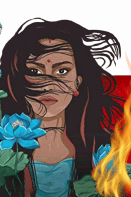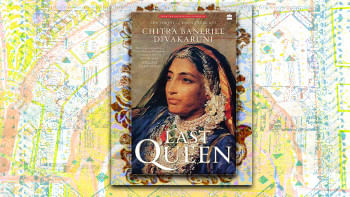Books to read this Durga Puja

With Durga Puja just around the corner, it is the perfect time to immerse oneself in books that discuss various aspects and themes surrounding the goddess and that of the Hindu scriptures. Here are a few books which will fulfil the reader's yearning to sit with a good read during the Durga Puja holidays.

DURGA PUJA: CELEBRATING THE GODDESS, THEN AND NOW
Sudeshna Banerjee
(Rupa, 2006)
This book serves as an introduction to Durga Puja, and explores how the celebration provides a glimpse into the rich cultural heritage of Bengal. Covering multiple aspects of the Puja—from its origins, its socio-cultural evolution, its commercialisation and its elaborate rituals and their symbolisms, the book is filled with stories collected from various journals and newspapers from the 19th century to the present day.

PROTHOM PRATISRUTI, 1967
Ashapurna Devi
Prothom Pratisruti, a part of the Subarnalata trilogy, was written by Ashapurna Devi. It is a story that highlights the struggles of middle-class women who wish to enjoy the same rights as men but are shackled by the chains imposed on them by the patriarchy. In the story, protagonist Satyavati rejects the traditional roles of a wife and with great difficulty, she establishes a school for girls. Throughout the story, Satyavati's strong character is sure to remind the reader of the goddess Durga, as her indomitable passion and strength reflect the goddess's attributes.

CHELEDER RAMAYANA
Upendrakishore Ray Chowdhury, 1965
An abridged version of the two main "Itihasas" or mythological legends of Hinduism, the book narrates the life of the character Rama, a righteous prince of Ayodhya, who is sent to a 14 year exile in the forest by his father King Dasharatha. Rama travels across forests during the exile along with his wife Sita and brother Lakshmana, where Sita is kidnapped by the demonic Ravana—king of Lanka. This results in a war between Rama and Ravana as well as Rama's eventual return from exile at the end of the war.
It is widely believed that Rama defeated Ravana in battle by killing him on the day of Dashami of the Durga Puja after seeking blessings from the goddess herself. While the original epic has about 24,000 verses, this particular abridged version makes the story accessible to readers from different walks of life.

IN THE FOOTSTEPS OF RAMA: TRAVELS WITH THE RAMAYANA
Vikrant Pande and Neelesh Kulkarni
(Harper Collins, 2021)
While reading the Ramayana, one ought to be curious about the extent to which the places or characters mentioned in the book are historically real. In The Footsteps Of Rama details the quest of Vikrant Pande and Neelesh Kulkarni as they attempt to retrace the fabled journey of Rama. They travel from Ayodhya to the Dandakaranya forest and Panchavati (near Nashik) and on to Kishkindhya (close to Hampi), Rameshwaram and Sri Lanka.
During their travels, they explore the extent to which local and regional folklore are connected to the narrative of the Ramayana, and how the tale of the Ramayana is still relevant to the people living where Rama and his co-travellers are said to have charted.

DHAKAR SMRITI
Muntassir Mamoon
(Mowla Brothers, 2005)
Dhakar Smriti—a series of memoirs written by cultural figures who have lived at some point or another in Dhaka—contains several sections describing the cultural festivals as they were celebrated over the years. From Janmashtami to Saraswati Puja and Durga Puja, reading the older anecdotes does make one muse over how the city and its celebrations of Durga Puja have evolved over the last several decades.
Hrishik Roy is an intern at Daily Star Books. Reach out to him at [email protected].

 For all latest news, follow The Daily Star's Google News channel.
For all latest news, follow The Daily Star's Google News channel. 







Comments